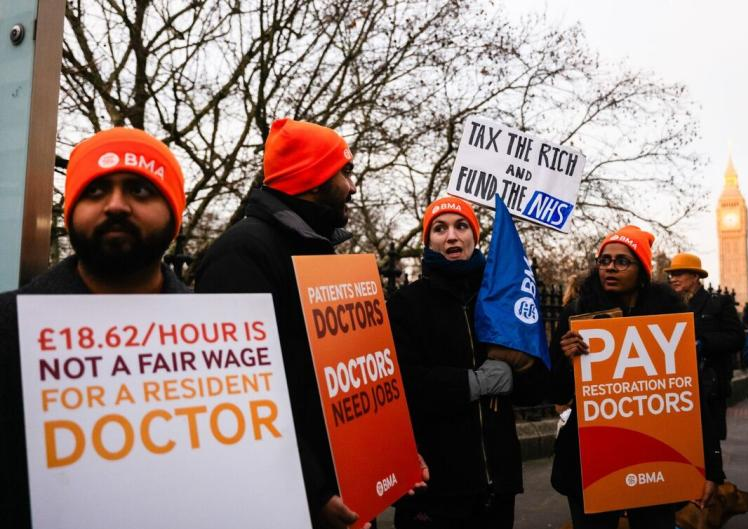
Internationally renowned economist Henrik Zeberg warned on the social platform on the 7th that the "huge upward wedge peak" pattern on the weekly chart of the US financial sector, accompanied by a bearish divergence, will eventually trigger an unprecedented financial crisis over time, while the stock market and cryptocurrency may soar to all-time highs before crashing. It is worth noting that this financial forecast by Henrik Zeberg is based on the analysis of the Business Cycle Model, which has a track record of accurately predicting economic downturns such as the European sovereign debt crisis, Serbian economic activity, and the 2008 financial crisis over the past 80 years.
Coincidentally, the US stock market experienced a sharp shock in the first trading day of 2025, the three major stock indexes fell for five consecutive days, including the NASDAQ 100 index and the S&P 500 index closed down 0.2%, the Dow Jones Industrial Average fell for the fourth consecutive trading day, closing down 0.36%, and the widely watched Tesla stock price fell 6.2%. Apple shares fell 2.6%, overall, the overall financial market performance is not good, the market mood is pessimistic, investors are full of concerns about the future trend, although the performance of the US stock market in the last year exceeded expectations, but the valuation risk, bubble risk, premium risk and policy and geopolitical risk faced by the US stock market will be severely tested in 2025.
Goldman Sachs Group issued a warning that the US stock market may collapse in 2025, and advised investors to flee the US stock market as soon as possible, Nomura Securities analysts warned that the technology bubble is one of the biggest risks to the US stock market in 2025, and mentioned that tariffs and geopolitical shocks may lead to disruptions in the US stock market. The Bank of America has repeatedly warned that the US stock market may face the risk of bubble bursting in 2025, but whether the US stock market has plunged this year is still unknown, but its recent downward shock has caused the international community to pay wide attention at the same time, but also issued a warning and worry about the huge hidden crisis.
First, valuation risk. The current valuation of the US stock market is already at an all-time high, with the P/E ratio of the S&P 500 index exceeding 25 times, close to the peak of the dot-com bubble in the late 1990s. This high valuation may affect the correction of stock prices when companies fail to meet the expected earnings, leading to the accumulation of market vulnerabilities and further exacerbating the risk of bubble bursting.
Second, the risk of tech stock bubble is severe. The boom in the artificial intelligence and technology industry is seen by some analysts as a potential bubble risk, and if the growth of these industries cannot be sustained, it may trigger a market correction, and the current valuation of US technology stocks has reached a historical high driven by the artificial intelligence (AI) boom, and investors are too optimistic and blind in the confidence of US companies. Once there is another dot-com bubble event, in which the Nasdaq index rose sharply in a short period of time and then collapsed quickly, the market will face huge or even crash correction pressure.
Third, high premiums occur frequently. Since the beginning of this year, the trading price of the US stock market is much higher than the fair value, the premium rate of the US stock QDII fund remains high, the premium rate of some funds exceeds 5%, or even reaches 22%, and the premium rate of the S&P consumer ETF was once more than 27% at the end of January 6, which caused the fund company to issue multiple premium risk warning announcements, this high premium phenomenon indicates that investors blindly chase high prices. There is a large investment risk, and the frequent occurrence of this premium phenomenon will lead to increased market volatility in the future, and even the risk of peaking and falling.
Fourth, the uncertainty of monetary policy. The Federal Reserve has ended a cycle of interest rate cuts at the end of last year, and plans to slow down the pace of interest rate cuts in 2025, and may even turn to a hawkish stance, which may trigger a rise in investor risk sentiment, which will push up stock market valuations, exacerbate market volatility, and lead to liquidity tightening, however, the room for interest rate cuts is limited, and if the rate cut is insufficient, it will not be enough. It may lead to a lack of confidence in the economic recovery, which in turn increases the likelihood of a bubble bursting. At the same time, the slower pace of interest rate cuts by the Federal Reserve will lead to less liquidity in the market, which will put great pressure on highly valued stocks, and in turn promote the possibility of asset bubbles.
Fifth, uncertainty about Trump's policies. The re-election of Trump's new cabinet, its tax cuts, deregulation and other policy combinations have promoted the stock market, but the uncertainty of future policies may weaken this support, at the same time, the Trump administration's tax cuts and fiscal stimulus measures have brought reflationary pressure and fiscal deficit expansion and other issues, these policies may support the stock market in the short term, but in the long run, Policy uncertainty in Trump's second term will increase market volatility, thus destabilizing market expectations for the future and increasing the risk of bubbles bursting.
In short, the risks facing the US stock market in 2025 are mainly concentrated in excessive valuation, obvious bubble trend, frequent premium trading and policy uncertainty, and under the combined effect of these factors, the US stock market may experience sharp fluctuations and even a sharp correction. Investors need to be cautious, pay attention to market dynamics, and take appropriate risk control measures to deal with potential market risks.

Junior doctors in the UK officially launched a five-day strike on Wednesday (December 17th).
Junior doctors in the UK officially launched a five-day str…
The Thai Pride Party is considering nomasting three candida…
With the continuous intensification of international sancti…
With $15.82 billion in sales and a 108% year-over-year incr…
According to the South Korean media Dealsite, the recent te…
The current geopolitical conflicts around the world are oft…